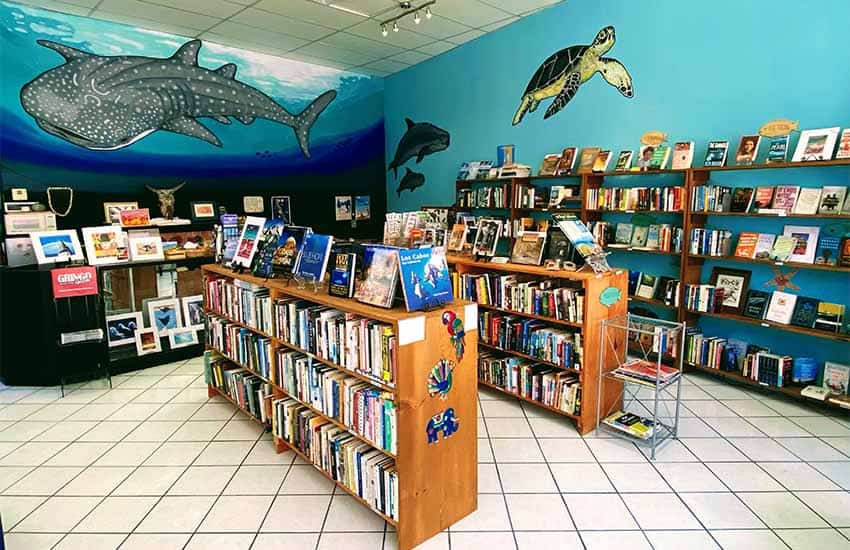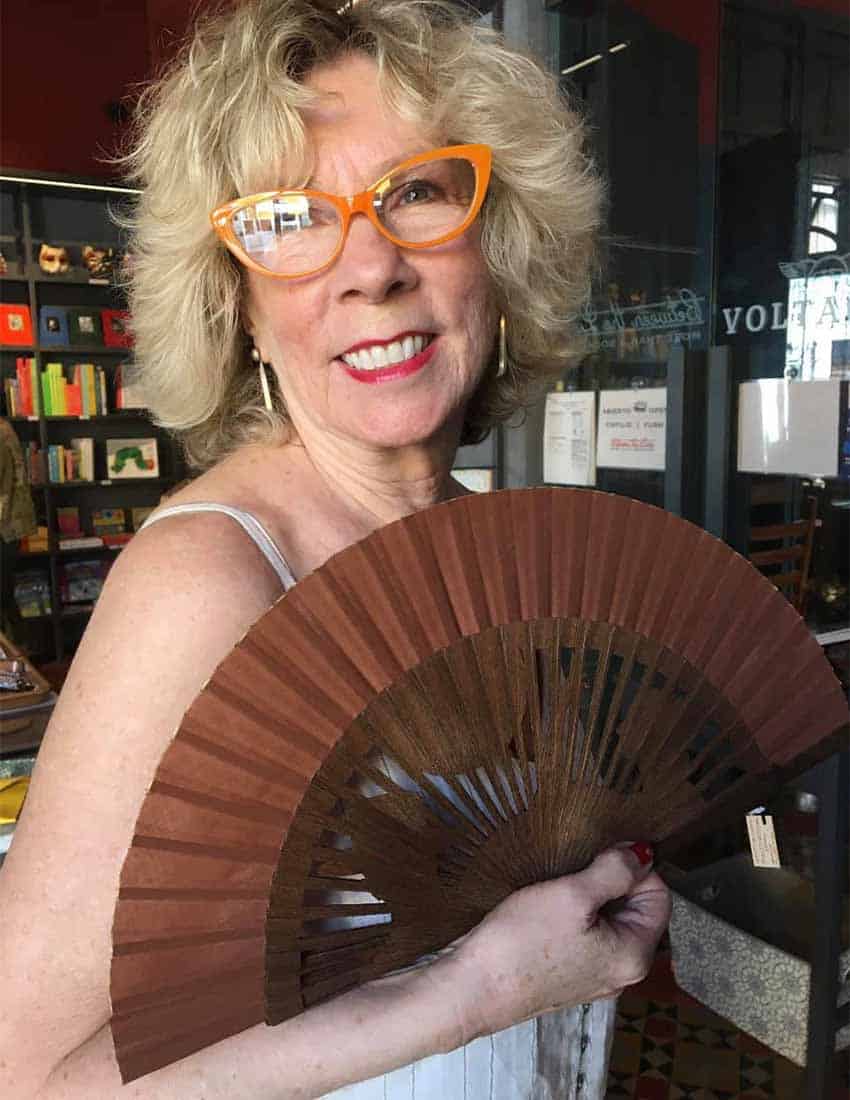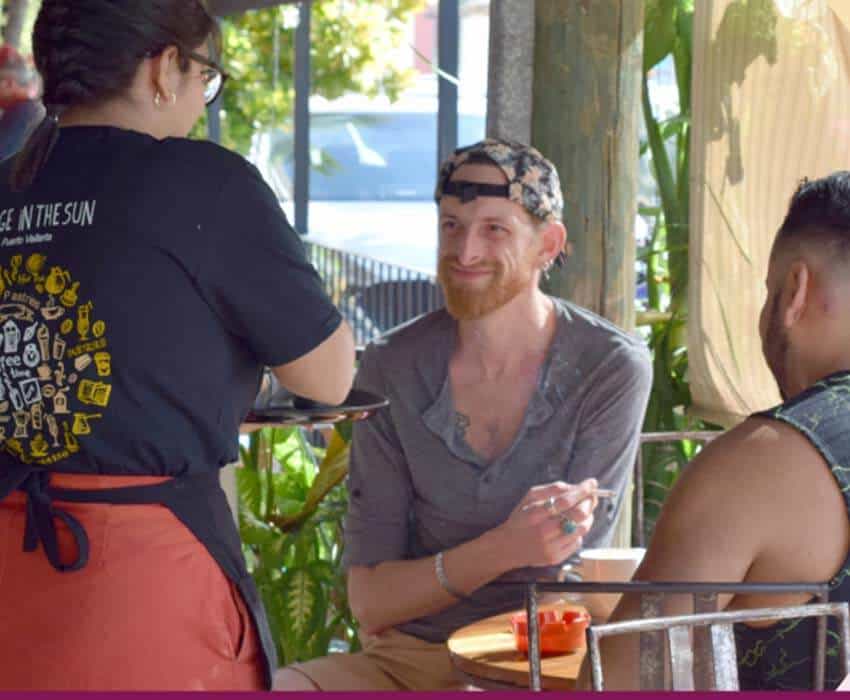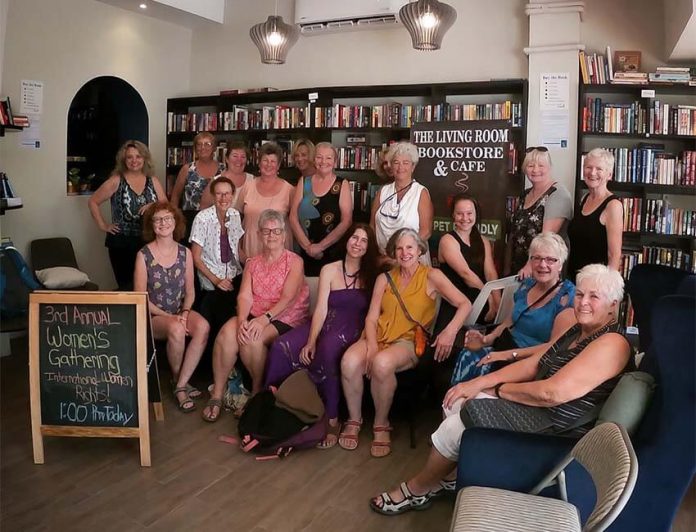Living as a foreigner in Mexico often means that we look for little nooks of familiarity. For some of us, having a cozy bookstore filled with titles in English fits the bill.
Granted, you can get books in English from Amazon and even at Mexican chains like Gandhi, but it is not the same as being surrounded by walls full of titles in your language. Many (physical) book lovers want and need that store experience, with both chains and indie bookstores in North America and other countries providing that.
Entrepreneurs in Mexico are providing that experience too. They take their cue from bookstores back home, then adapt to the communities they serve, whether they are in Mérida, Mexico City, Puerto Vallarta or La Paz. They provide a welcoming physical space, often with comfy sofas, chairs and more, so that customers hang around for a while.
Coffee is another important part of the equation, with bookstores selling it themselves or partnering with a cafe.

Lindsey of Puerto Vallarta’s A Page in the Sun bookstore says, “Everybody meets, you know, you’re sitting at the table having your coffee, and everybody’s suddenly talking to each other at the next table.”
The bookstore features coffee grown in Jalisco, selected and roasted by the two sisters that own the place.
Alejandra Xacur of Libros Libros Libros in Mexico City has a cafe that entices mothers to sit and sip while their children enjoy an area designed just for them. Kelly Casey of The Living Room in Puerto Vallarta also finds specialty baked goods important, like Nanaimo bars, a favorite sweet treat among Canadian snowbirds.
Coffee creates a community atmosphere, and for brick-and-mortar bookstores, creating and maintaining that for their customers is equally or even more important than the books. Physical bookstores are a niche market, and much of their advertising is via word-of-mouth.

These businesses must understand their local communities, meaning the English speakers living here. Such a business obviously attracts foreigners looking to meet other like-minded foreigners, but not all of Mexico’s foreign communities are the same.
In beach towns like Puerto Vallarta, most customers are snowbirds and tourists, making sales highly cyclical. In Mexico City, foreigners are often younger and in the capital year-round because of their careers. There are two English-language bookstores here.
But even in the capital, customer bases vary: Under the Volcano caters to used book lovers in a more bohemian neighborhood and is very much like the chaotic used bookstores I remember in my college days. Libros Libros Libros caters very strongly to families with school-aged children that live in its location in and near some of Mexico City’s most affluent areas.
For all the bookstores, the community is not just foreign residents; they have connections to the local Mexican population as well. In Puerto Vallarta and La Paz, Baja California Sur, there are many Mexicans who have achieved a high level of English, as it is essential in the tourism industry. Half of Libros Libros Libros’ clientele is Mexican — the families whose children attend one of the many prestigious bilingual schools in the area.

Most of the bookstores have relationships with bookstores catering to Spanish speakers. Each refers customers to the other.
All the bookstores, (with the notable exception of Under the Volcano), see events as an important part of their business plan. Almost all have author presentations, academic talks, book clubs and even support for local writers. Between the Lines in Mérida sponsors special sales to benefit local charities. Libros Libros Libros and Allende Books have storytimes for children to cater to younger families.
What kinds of books these stores offer is guided by the nature of the local community: for areas near the beach, light reading, especially novels, are highly popular, as are used books. Page Under the Sun and The Living Room take advantage of books brought by snowbirds during high season, buying them in spring to have inventory for when customers return in the fall. Between the Lines, Libros Libros Libros and Allende Books, however, focus more on new books, despite the significantly higher cost. Allende Books, given its location in the Gulf of California, sells a lot of field and travel guides as well.
Almost all the bookstores do sell some merchandise other than books, saying that it’s necessary in order to survive. Some keep this to a minimum, but others have gotten creative: Between the Lines offers high-end collectibles such as Spanish fans and Venetian masks. Page Under the Sun has coordinated with a local art group to display paintings and sculptures on commission.
The ability of these bookstores to cater to their local clientele has much to do with the owners themselves. Nearly all are foreigners with many years of living in their community. Even the exceptions show strong ties: Page Under the Sun’s owners are Mexican, but their mother was Canadian. Alejandra Xacur, who is Mexican, grew up with Libros Libros Libros and bought it from its American founder in 2021.
Bookselling isn’t an easy business even in the best of times. Most of these shops were founded only in the past few years, often in areas where similar businesses had disappeared. Allende Books and Libros Libros Libros were recently bought by new owners who had to completely revamp the businesses to make them viable. Interestingly, most were started or bought just before or during COVID, which added strains such as government-ordered closures and other restrictions that are only now being eased.
This forced owners to find ways to survive, even “stooping” to using online resources, primarily to maintain contact with their customer base. In the case of Between the Lines, they even did book deliveries.
Many of these entrepreneurs are acting out of a lifelong love of books and the desire to share that affinity with others. Or as Juanita Stein of Between the Lines puts it, part of her work is to “… take people back to the pleasure of holding a physical book in their hands …”
Leigh Thelmadatter arrived in Mexico 18 years ago and fell in love with the land and the culture in particular its handcrafts and art. She is the author of Mexican Cartonería: Paper, Paste and Fiesta (Schiffer 2019). Her culture column appears regularly on Mexico News Daily.
